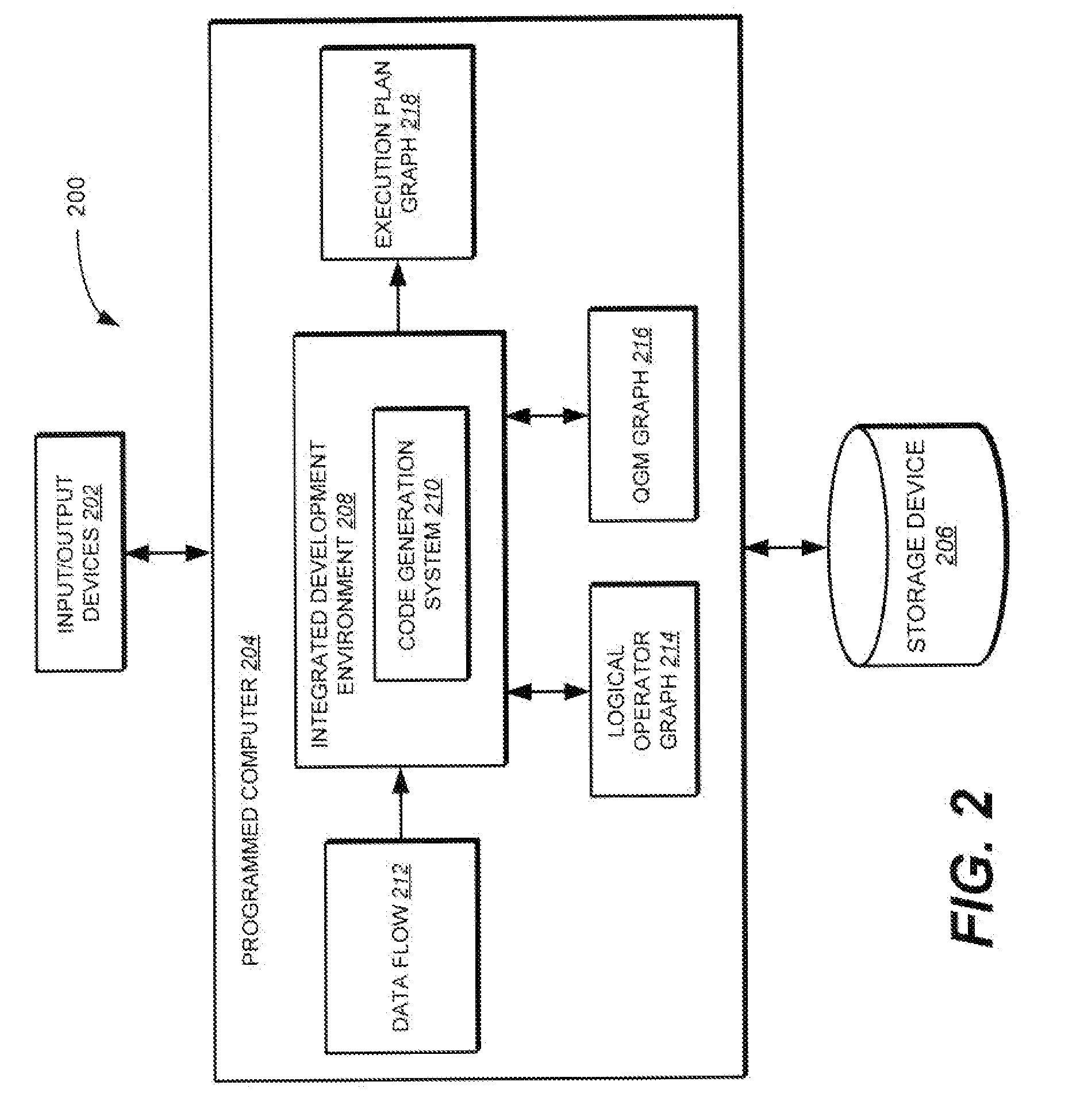Method and apparatus for modelling data exchange in a data flow of an extract, transform, and load (ETL) process
- Summary
- Abstract
- Description
- Claims
- Application Information
AI Technical Summary
Benefits of technology
Problems solved by technology
Method used
Image
Examples
example staging
Types of a Data Staging Operator
[0045]In one implementation, when a code generation system chunks a data flow into several small pieces, staging tables and staging files are created and maintained to hold intermediate row sets during an ETL process—e.g., data between extract and transform, between transform and load, or a chunking point inside a data flow. In one implementation, staging tables are database relational tables, and depending on how staging tables are used, a given stage table can be either a permanent table on ETL transform database, or a temporary table created in the data transformation session. In one implementation, staging files are flat files that hold intermediate transformed data in the text format. Staging tables and staging files can be created on a transform engine. A user can also input other specifications of a staging object, such as (table) spaces, indexes used for staging tables, location for staging files.
[0046]Staging Tables
[0047]In one implementation...
PUM
 Login to View More
Login to View More Abstract
Description
Claims
Application Information
 Login to View More
Login to View More - R&D
- Intellectual Property
- Life Sciences
- Materials
- Tech Scout
- Unparalleled Data Quality
- Higher Quality Content
- 60% Fewer Hallucinations
Browse by: Latest US Patents, China's latest patents, Technical Efficacy Thesaurus, Application Domain, Technology Topic, Popular Technical Reports.
© 2025 PatSnap. All rights reserved.Legal|Privacy policy|Modern Slavery Act Transparency Statement|Sitemap|About US| Contact US: help@patsnap.com



